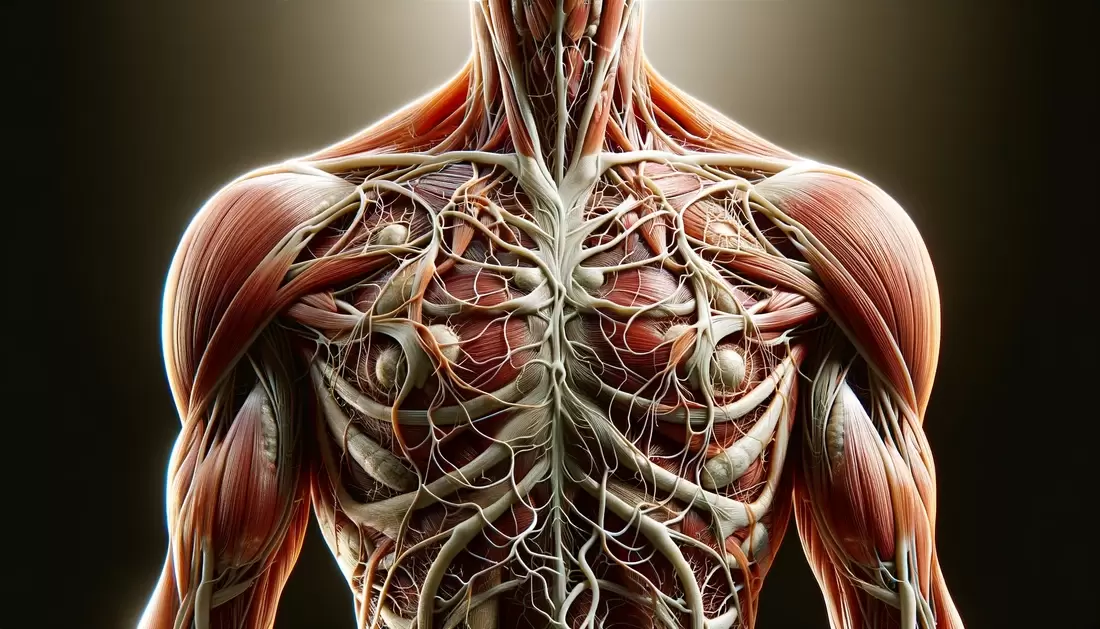|
We're diving into something crucial for your health—Heart Rate Variability (HRV). Have you ever thought about what your heart is telling you beyond just your pulse rate? HRV can give you some amazing insights. Check this episode to learn more.
Why HRV Matters HRV measures the variation in time between each heartbeat, controlled by your autonomic nervous system. It shows how well your body adapts to stress and maintains balance. A higher HRV indicates better fitness and stress resilience, while a lower HRV can signal stress, fatigue, or potential health issues. How HRV Affects Your Health Stress Management: HRV is a powerful indicator of your stress levels and recovery status. By understanding HRV, you can determine when to push yourself and when to rest, leading to better stress management. Cardiovascular Health: HRV is linked to heart disease risk factors such as high blood pressure and cholesterol levels. Regular monitoring of HRV can alert you to potential heart issues before they become serious. Overall Well-being: Changes in HRV can signal shifts in your health before other symptoms appear. This makes HRV a valuable tool for early detection and proactive health management. Ways to Improve Your HRV Regular Exercise: Both aerobic exercises like running and cycling, and strength training exercises like weightlifting, can improve your HRV by enhancing cardiovascular fitness and reducing stress levels. Mindfulness and Meditation: Practices such as mindfulness, meditation, and deep breathing exercises help regulate your nervous system, leading to improved HRV over time. Quality Sleep: Aim for 7-9 hours of quality sleep each night. Good sleep is crucial for recovery and overall heart health, which in turn boosts HRV. Balanced Nutrition: Eating a diet rich in omega-3 fatty acids, antioxidants, and fiber supports heart health and improves HRV. Focus on whole foods, including plenty of fruits, vegetables, nuts, and seeds. Lifestyle Changes to Enhance HRV Hydration: Staying well-hydrated supports overall bodily functions and can positively impact your HRV. Avoiding Stimulants: Reducing caffeine and alcohol intake can help maintain a balanced autonomic nervous system, improving HRV. Regular Relaxation: Incorporating relaxation techniques such as yoga, tai chi, or even leisurely walks can help reduce stress and improve HRV. Technological Tools for HRV Wearable Devices: Modern wearables like smartwatches and fitness trackers provide easy and accurate HRV monitoring. These devices offer insights into your daily HRV, allowing you to make informed lifestyle choices. Apps and Software: There are various apps and software available that can analyze your HRV data, provide feedback, and suggest ways to improve your HRV. Understanding Your HRV Data Daily Monitoring: Keeping track of your HRV on a daily basis helps you understand your body’s response to different activities, stressors, and rest periods. Long-term Trends: Observing long-term HRV trends can provide a clearer picture of your overall health and fitness, helping you make better decisions for your well-being. Taking Action Personalized Plan: Based on your HRV data, create a personalized plan that includes exercise, nutrition, sleep, and stress management strategies. Professional Guidance: Consulting with healthcare professionals or fitness experts can help you interpret your HRV data and develop an effective health plan. Don't leave your heart health to chance. Start monitoring your HRV to better understand your body's signals and take proactive steps to improve your health. Click HERE to watch this week's episode about HRV.
0 Comments
Have you ever wondered how your thyroid might be affecting your overall well-being? About 20 million Americans have some form of thyroid disease, and many remain undiagnosed. Let's dive into why your thyroid health is so crucial and what you can do to keep it in check.
Your thyroid plays a pivotal role in regulating your energy levels, and mood. When it's not functioning properly, it can lead to a host of issues, from fatigue and weight gain to mood swings and more serious health problems. A lot is to be learned from this episode. Key Symptoms of Thyroid Issues
Effective Strategies for Optimal Thyroid Health 1. Prioritize a Balanced Diet Incorporate foods rich in iodine, selenium, and zinc, such as fish, nuts, whole grains, and seaweed. These nutrients are essential for thyroid function. 2. Regular Check-ups Schedule regular screenings and blood tests to monitor your thyroid-stimulating hormone (TSH) levels. Early detection can make a significant difference in managing thyroid health. 3. Consider Supplementation While a balanced diet is key, supplements like iodine, selenium, and vitamin D can provide additional support. Personalized micronutrient testing can help determine the right supplements for your specific needs. 4. Manage Stress Chronic stress can negatively impact thyroid function. Incorporate stress-reducing activities like yoga, meditation, and deep-breathing exercises into your daily routine. 5. Explore Modern Therapies Stay informed about advancements in medical technologies that offer new ways to monitor and manage thyroid health. Emerging therapies and personalized medicine approaches can provide tailored solutions. Take Action Today Don’t wait until symptoms worsen. Start incorporating these strategies into your daily life to enhance your thyroid health and overall well-being. Click HERE to watch the full episode for more in-depth information on thyroid health. About 20% of adults in the US are suffering from anxiety disorders, and I feel as though stress, anxiety, and depression are not talked about enough.
In this week’s episode, I want to talk about the importance of brain health (especially when you age) and effective strategies to optimize your brain health. First things first, “Why brain health matters”? Maintaining good mental health and brain function is crucial, especially as we age. Many of you face challenges like stress, anxiety, and depression, which can significantly impact our quality of life. Effective Strategies for Brain Health: Exercise: One of the big things you can do for your brain health is regular exercise. It’s a powerful tool for reducing symptoms of stress, anxiety, and depression. Activities like walking, swimming, and yoga are excellent choices that can easily fit into your daily routine. It's been proven to reduce your stress and depression by 50% Meditation and Mindfulness: There are a bunch of different parts to this, and a bunch of different types of meditation. But when we look at the group of research around that, we know that regular meditators reduce stress, they reduce anxiety, they have lower levels of depression, and they have better emotional balance. Nutrition and Supplements: When you look at the research around caffeine and stress response, it’s not good. Moderate caffeine consumption can improve our alertness and our mood—this is like one to two cups per whole day that falls into this area. Many people who are getting into this like six to eight cups a day can actually be increasing their anxiety, and it can be disrupting their sleep. A balanced diet and key supplements are essential for regulating stress hormones and neurotransmitters. Personalized micronutrient testing can provide tailored solutions to your specific needs. Modern Technologies and Therapies: This is an area that I think needs to be kind of handled with kid gloves. And that's not really what this is like, what are the actionable things that people have access to. Wearables and virtual reality technologies offer new ways to monitor and improve mental health. Additionally, emerging therapies like psychedelics and transcranial magnetic stimulation show great promise. Additional Tips for Mental Well-Being: Alternative activities such as cold exposure, forest bathing, and art therapy have been shown to reduce cortisol levels and improve mood. I have had patients who went and did some of these different types of ceremonies and used a very good administrator, therapist, shaman, if you will, to go through this and had good results. Incorporating these strategies into your daily life can significantly enhance your brain health and overall well-being. Click HERE to watch the full episode for more in-depth information on brain health. Hey dear,
Hope you are having a great week already. Today we talk about a very misunderstood concept: anger. You often think of anger as a negative emotion, something to be avoided or suppressed. However, misunderstanding and suppressing anger can lead to significant mental health issues, including depression and anxiety. This week's episode, let's explore how anger serves as a crucial warning sign that something is wrong with you and needs to be addressed, and how expressing it healthily can improve our emotional well-being. Understanding Anger Anger is a natural emotion that signals when something is wrong. It's a response to perceived threats, injustices, or frustrations. While society often teaches us to suppress anger, doing so can have detrimental effects on our mental health. The Consequences of Suppressing Anger When anger is suppressed, it doesn’t just disappear. Instead, it can turn inward, leading to feelings of helplessness, sadness, and even depression. Over time, unexpressed anger can build up, resulting in chronic anxiety and stress. Expressing Anger Healthily Recognizing the Signs: The first step to expressing anger healthily is to recognize it. Pay attention to physical signs such as increased heart rate, tension, or a flushed face. Emotional signs might include irritability or frustration. Healthy Expression Techniques:
Being in tune with our emotions means acknowledging and understanding them. This emotional awareness allows us to process our feelings constructively rather than letting them get worse. Unpacking Suppressed Anger from Childhood Many of us learn to suppress anger from a young age. Revisiting these childhood experiences in a safe and supportive environment can be incredibly healing. Therapies such as cognitive-behavioral therapy (CBT), psychodynamic therapy, and expressive therapies can help unpack and process these deep-seated emotions. Therapeutic Benefits of Expressing and Processing Anger Mental Clarity: Expressing anger can clear mental fog, providing clarity and insight into what’s truly bothering us. Improved Relationships: When we express anger healthily, it can lead to more honest and open relationships. Emotional Release: Releasing pent-up anger can reduce stress and prevent the build-up of negative emotions. Conclusion Understanding and expressing anger is vital for maintaining mental health. By recognizing anger as a signal, expressing it in healthy ways, and processing suppressed emotions, we can improve our emotional well-being and lead happier, more balanced lives. Have you struggled with understanding or expressing anger? Share your thoughts or experiences by replying to this email. Wishing you peace and emotional clarity, Derrick P.S. For more insights on understanding anger management, click HERE to watch our recent episode with Bronwyn Schweigerdt, an expert therapist in anger management. When you think about managing stress and depression, you often picture simple relaxation techniques or medication. While these methods are indeed part of the process, there is so much more to explore. Inspired by various scientific insights and wellness practices, this blog aims to broaden your perspective on effective stress and depression management.
Understanding Stress and Depression Stress: Stress isn't just about feeling overwhelmed. It’s your body’s natural response to perceived threats or challenges. Stress can be categorized into acute (short-term), episodic acute (frequent acute stress), and chronic (long-term) stress. It manifests in both physical and psychological symptoms such as headaches, muscle tension, fatigue, anxiety, and irritability. Depression: Depression goes beyond mere sadness. It’s a persistent mental health disorder marked by feelings of hopelessness, a lack of interest in daily activities, and various physical symptoms. Unlike temporary sadness, clinical depression is more severe and requires comprehensive management. Symptoms include changes in appetite, sleep disturbances, concentration difficulties, and feelings of worthlessness. Causes of Stress and Depression Stress can stem from various sources:
Managing stress and depression involves more than just one approach. Here are some scientifically-backed methods: Cryotherapy: Cryotherapy is more than just exposure to cold. It involves short-term exposure to extremely low temperatures, which can reduce inflammation and pain. Studies have shown that it helps in releasing endorphins, potentially alleviating anxiety and depression. Ashwagandha: Ashwagandha is a powerful adaptogenic herb. It helps regulate cortisol, the body's primary stress hormone. Regular use has been linked to reduced anxiety, improved mood, and better sleep. Exercise: Exercise is not just about physical fitness. It boosts the production of endorphins, which are natural mood lifters. Different types of exercise such as aerobic activities, strength training, and yoga can significantly reduce stress and improve mental health. Magnesium: Magnesium is essential for brain function and mood regulation. Many people are deficient in this mineral, which can increase the risk of depression and anxiety. Including magnesium-rich foods like leafy greens, nuts, and whole grains in your diet or taking supplements can be beneficial. NAD (Nicotinamide Adenine Dinucleotide): NAD plays a critical role in cellular energy production. Supplementation can improve mental clarity, increase energy levels, and enhance mood, making it particularly useful for combating fatigue and depression. Sauna: Regular sauna sessions promote relaxation and detoxification. They can lower stress levels and improve mood by increasing circulation and releasing endorphins, making it a great way to unwind. Fish Oil/Omega-3 Fatty Acids: Omega-3s are crucial for brain health. They have anti-inflammatory properties and are known to improve mood and cognitive function. Supplementing with omega-3s can reduce symptoms of depression, especially for those with low dietary intake. Relevant Peptides: Peptides are short chains of amino acids that impact various bodily functions. Some peptides, such as Semax and Selank, have shown promise in reducing anxiety and depression by modulating neurotransmitter activity and improving cognitive function. Conclusion Addressing stress and depression requires a multi-faceted approach. By incorporating methods like cryotherapy, Ashwagandha, regular exercise, magnesium, NAD, sauna sessions, fish oil, and specific peptides, you can find effective ways to manage these conditions. Remember, if stress or depression becomes overwhelming, seeking professional help is crucial. As research advances, new methods will continue to emerge, offering more hope and relief for those affected. Embrace these techniques and find what works best for you to improve your mental health and overall quality of life. Whenever somebody mentions “Yoga”, the first thing that comes to mind is stretching. Yes of course, Stretching is part of Yoga, but that is not the full picture; there is more to Yoga than stretching.
Taking from our episode with Yogi Aaron, here are some helpful insights that will help you understand some other aspects of Yoga which go beyond stretching: The Pranayama Breathing Practice: There is a life energy in our body that is referred to as prana. Pranayama involves controlling your breathing and regulating the flow of your prana. This helps you breathe more effectively, calms your mind, and balances your nervous system, which helps to improve your concentration and reduce your stress levels. There are different forms of Pranayama practices in terms of complexity, ranging from simple deep breathing to advanced techniques involving breath retention and rapid inhaling and exhaling, each serving different purposes in supporting physical and mental well-being. Meditation and Mindfulness: It is about being present in the moment, which involves focusing your mind and paying closer attention. This helps reduce your stress levels, clears your mind, and puts you in a very balanced emotional state, which contributes to your overall well-being. Through regular meditation, you can develop a deeper connection with yourself, leading to improved concentration, patience, and a sense of inner peace. Philosophical Teachings: Have you heard of the Yoga Sutras of Patanji? probably not. They are teachings that outline the eight limbs of yoga, which are guiding principles for living a meaningful life. They encourage you to engage in self-discipline, personal growth, and a deeper understanding of yourself and the universe, thereby creating a balanced connection between your mind, body, and spirit. Let me know in the comment section if you've heard about the Yoga Sutras of Patanji. Emotional Balance: We earlier talked about the Pranayama practice which involves controlling your breathing and regulating the state of your prana. When this is perfectly integrated with your physical posture, it gives you a life changing result. It can significantly boost your emotional resilience, reduces your stress, and improves your concentration levels. In the long run, this integrated approach can improve your physical health, clears your mind, and makes you emotionally stable, which profoundly impacts your overall well-being and quality of life. Community and Connection: When you are involved in yoga, you will be connected with different people of different backgrounds and ethnicity through shared practices, workshops, and events. This creates a sense of community and facilitates support. In yoga, sharing experiences helps you grow personally and feel better together with other people. Yoga places are welcoming to all kinds of people, letting you connect deeply beyond just doing poses. Yoga focuses on shared values and kindness, making the yoga community stronger. So yoga is not all about stretching, it involves different aspects of life as discussed above; controlling your breath, focusing your mind and paying closer attention, philosophical teachings about self-discipline and personal growth, integrating your breathing with your physical posture, and being connected with other people in a community. Click HERE to watch our episode with Yogi Aaron, author of Stop Stretching and the creator of the revolutionary approach to yoga — Applied Yoga Anatomy + Muscle Activation™ (AYAMA). We delve into the misconceptions surrounding yoga and the importance of understanding the true purpose of the practice. You definitely don’t want to miss this! Hey!
Today I've got something pretty fascinating for you. I recently took a deep dive into the realm of mushrooms with The Mushroom Guy, Robert Johnson. This amazing episode is an eye-opener into the nuances of functional mushrooms and their medicinal effects. First things first, what are the categories of mushrooms? Mushrooms can be categorized into edible gourmet mushrooms, functional mushrooms, and psychedelic mushrooms. In this episode we dive deep into functional and psychedelic mushrooms and how they can improve our health. Functional mushrooms, such as lion's mane, cordyceps, turkey tail, and reishi, offer various health benefits, including cognitive enhancement, energy boosting, and immune support. Psychedelic mushrooms, also called hallucinogenics, are substances that can alter neuron activity in the brain in a profound way. They can alter your visual cortex, time and space, and even make you feel like you're having some deep spiritual journey. Those of you who know me know I love a good morning lion's mane extract in my coffee and an evening Chaga and cordyceps tea to prepare for bed so I thought it would be good to give a little guide about how these functional mushrooms can be helpful. Functional Mushrooms actions: Lion's Mane (Hericium erinaceus):
A study from Johns Hopkins University, where they gave 51 participants with life-threatening cancer diagnosis a single dose of psilocybin. 80% of the participants saw their anxiety and depression drop significantly, and the effects lasted for a whopping six months! I can’t cover everything in just a single email, check out our recent episode with the plant-based medicine expert; Robert Johnson - The Mushroom Guy. We delved into the mushroom industry and the different categories of mushrooms, including edible gourmet mushrooms, functional mushrooms, and psychedelic mushrooms. We also explore the concept of microdosing and its potential benefits. You definitely don’t want to miss this! CLICK HERE to watch the full episode Today, we are diving into a sensitive topic that is very crucial to your well being as well. A topic that's often brushed under the rug but seriously impacts our lives: sexual health. It's something we all deal with in some way or another, yet it's surprising how little attention it gets. So, let's break the ice and have a candid conversation about it.
Let's say you're trying to gauge how you're doing in the bedroom, and all you get is a generic question like, "Are things getting better?" It's a frustrating experience that can leave you feeling helpless and disconnected from your own body. The issues of impotence and low libido are very dissatisfying when you don’t have a clear understanding of the causes and answers or effective solutions to address them. That's where Dr. Elliot Justin comes in. He's been on a mission to shake things up in the world of sexual health. He got more interested in studying and treating problems like impotence, low sex drive, and other sexual health issues when he realized that the only way to measure improvement was by asking patients a simple question: "Is this getting better or not?" In today's world, where we measure progress in many areas, sexual health hasn't gotten enough attention because people feel awkward talking about it. I know you have heard about the physical and psychological factors that can mess with your sexual energy—things like diabetes, stress, or performance anxiety. But here's the exciting part: the advances in technology have provided some relevant cool tools that will help address your sexual problems. Let's talk about the Tech Ring for instance. It is a gadget that's like your personal sexual health coach. It not only tracks how you're doing but also gives you tailored tips to boost your game based on your own data. In our latest episode with Dr. Justin, we dived into technological solutions to sexual health like the Tech Ring. We explore practical ways of which it can be useful. We got the inside story on his journey through the world of healthcare and how he ended up starting the first-ever sexual tech company.We discussed everything from the basic details of sexual health to practical advice for feeling happier and more fulfilled in bed. So, if you're ready to take charge of your sexual well-being and spice things up in the bedroom, come join us. CLICK HERE to catch the full episode and get ready to unlock a whole new level of satisfaction. Let's dive into the world of chronic pain and explore some common misconceptions that may be holding you back from finding lasting relief.
Do you believe that chronic pain is simply a sign of tissue damage, or an inevitable consequence of aging, and that painkillers are the only solution to your chronic pain? All what you’ve been thinking about chronic pain are nothing but misconceptions. These misconceptions have been perpetuated for years. Let's explore the truth behind these misconceptions and discover a comprehensive approach to managing your chronic pain. Let's start by addressing one of the most common myths about chronic pain: the belief that pain equals damage. Chronic pain is not a direct indicator of tissue damage or injury, because research has shown that chronic pain stems from a blend of physical, mental and social influences. This is crucial for you to understand as this can open up new ways to manage your pain beyond traditional medical care. Another common misconception is the idea that rest is always the best treatment for your chronic pain. Of Course rest is beneficial for acute injuries, but here’s the thing, prolonged rest can actually worsen your chronic pain conditions by leading to muscle weakness, stiffness, and limited movement. What you should do instead is to adopt a balanced approach that includes physical activity and exercise tailored to individual needs. This can help improve your strength, flexibility, and overall function. There's also a prevalent belief that chronic pain is inevitable with aging. While it's true that the prevalence of chronic pain tends to increase as you age, it doesn't mean that living with pain is unavoidable. By adopting healthy lifestyle habits, managing underlying health conditions, and seeking appropriate medical care, you can significantly reduce the impact of chronic pain on your daily life. Finally, there's the belief that painkillers are the only solution for chronic pain. While painkillers may provide you temporary relief, relying solely on medication can have limited effectiveness and potentially harmful consequences on you. Integrative approaches that combine medication with lifestyle modifications, physical therapy, psychological interventions, and complementary therapies offer a more holistic and effective approach to managing your pain. By removing the cloudy haze of myths and misconceptions about your chronic pain, you can gain a better understanding of your condition and explore a variety of treatment options to improve your quality of life. Ready to explore a new approach to your chronic pain management? Check out our latest episode, where we delve into brain retraining techniques and how they can transform your experience of long-lasting pain. Click HERE to listen to the full episode and discover valuable insights on managing chronic pain with a holistic approach. Let's uncover what's behind your pain and start taking steps towards feeling better in 2024. Call us at (337) 504-5144 to book an appointment and start your journey to better health. Let's dive into something fascinating today – your body's fascia! It's one of those things we don't talk about much, but trust me, it's incredibly important.
Picture your body as a complex network of interconnected parts, like a finely tuned machine. Now, imagine fascia as the scaffolding that holds everything together – muscles, organs, joints, you name it. Without fascia, we'd be a bit of a mess, to be honest! But here's what makes fascia truly remarkable: it's not just a passive structure. Nope, it's a living, breathing part of you, constantly adapting and responding to your movements. It's like having a built-in support system, always there to keep you going. Now, let's talk about how we can keep our fascia in top shape, especially as we age. After all, our bodies change over time, and it's essential to give our fascia the love and attention it deserves. Hydration is Key: First things first – water is your fascia's best friend. Just like you need to stay hydrated to feel your best, your fascia needs it too. Drinking plenty of water helps keep your fascia hydrated and supple, supporting optimal movement and flexibility. So, grab that water bottle and drink up! Move It or Lose It: You've probably heard the saying, "use it or lose it," right? Well, the same goes for your fascia. Regular movement, whether it's through stretching, yoga, or gentle exercises, is crucial for keeping your fascia happy and healthy. It helps prevent fascial restrictions and promotes circulation, ensuring that your fascia stays in tip-top shape. Treat Your Fascia to Some TLC: Think of your fascia as a hard-working employee – it deserves a little pampering now and then! Techniques like foam rolling, massage, or myofascial release can work wonders for relieving tension and improving fascial health. It's like giving your fascia a well-deserved spa day! Watch Your Posture: Good posture isn't just about looking confident (although that's definitely a plus!). It's also essential for maintaining the health of your fascia. Poor posture can put extra stress on your fascia, leading to stiffness and discomfort. So, make an effort to sit up straight and stand tall – your fascia will thank you for it! Fuel Your Body Right: Last but not least, let's talk about nutrition. Eating a balanced diet rich in anti-inflammatory foods can do wonders for your fascia. Think fruits, vegetables, and healthy fats – they help reduce inflammation in your body, including your fascia, promoting overall health and well-being. Facing fascial discomfort alone can be daunting, but you're not on this journey solo. At Acadiana Pain & Performance Rehab, we are here to support you. Let's uncover the root causes of your discomfort and take proactive steps toward better health in 2024. Contact us at (337) 504-5144 to schedule an appointment and begin your journey toward improved fascial health. |
AuthorDerrick Hines, D.P.T. is the owner of Acadiana Pain and Performance Rehab. The information in this blog is personal opinion and not to be used as medical advice. Archives
June 2024
Categories |
|
325 Oil Center Dr. Lafayette, LA 70503
[email protected] |
*The details, recommendations and content offered on this site are for information purposes only. No patient relationship is formed and this does not constitute medical advice. If you have any health issue needs please seek your medical professional.










 RSS Feed
RSS Feed